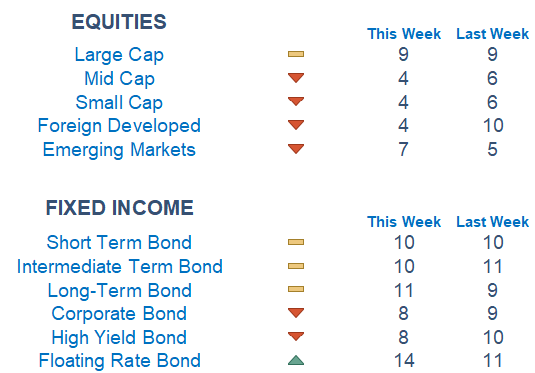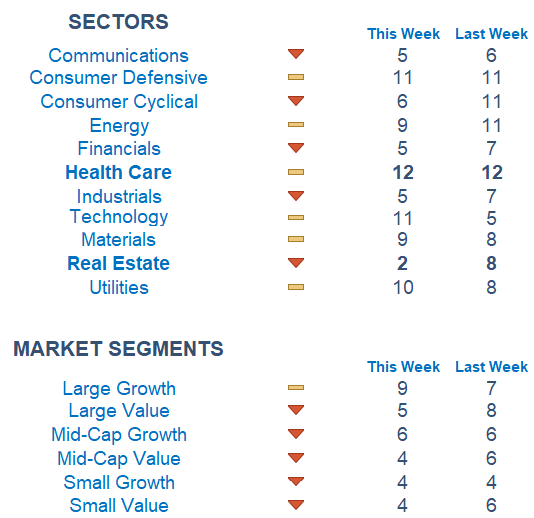Newton scores are showing continued weakness across broad equity markets. From a relative strength perspective, we are seeing slightly better readings by Large Caps compared to their smaller counterparts.

This Week on Wall Street - Week of August 21st
Market Commentary
Newton scores are showing continued weakness across broad equity markets. From a relative strength perspective, we are seeing slightly better readings by Large Caps compared to their smaller counterparts.
Fixed income is still weak as the ten-year yield hit its highest level since 2007. Beneath the surface, defensive positioning remains as Health Care is leading the pack. On the other hand, interest rate-sensitive sectors like Real Estate are worsening.
Investors will likely be sitting on their hands this week in anticipation of Federal Reserve Chairman Powell's speech at Jackson Hole on Friday. Jackson Hole is an annual conference where dozens of central bankers, policymakers, economists, and academics meet to discuss economic issues.
During the speech, we should get more clues on the outlook for interest rates and the economy. Last month the Fed lifted rates to their highest level in over 2 decades to 5.5%.

What is Newton?
Our Newton model attempts to determine the highest probability of future price direction by using advanced algorithmic and high-order mathematical techniques on the current market environment to identify trends in underlying security prices. The Newton model scores securities over multiple time periods on a scale of 0-20 with 0 being the worst and 20 being the best possible score. Trend & level both matter.

Economic Releases This Week
Monday: None
Tuesday: Richmond Fed President Speaks, Existing Home Sales
Wednesday: Flash US Services & Manufacturing PMIs, New Home Sales
Thursday: Initial & Continuing Jobless Claims, Durable Goods Orders
Friday: Univ of Michigan Consumer Sentiment, Fed Chair Powell Speech at Jackson Hole

Technical trading models are mathematically driven based upon historical data and trends of domestic and foreign market trading activity, including various industry and sector trading statistics within such markets. Technical trading models, through mathematical algorithms, attempt to identify when markets are likely to increase or decrease and identify appropriate entry and exit points. The primary risk of technical trading models is that historical trends and past performance cannot predict future trends and there is no assurance that the mathematical algorithms employed are designed properly, updated with new data, and can accurately predict future market, industry and sector performance.
